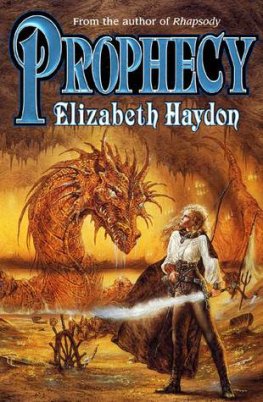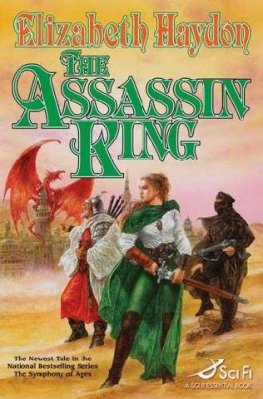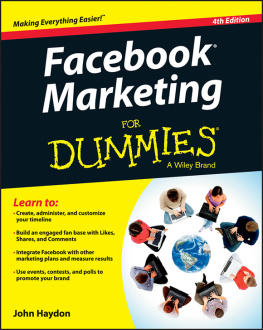A. L. Haydon
PREFACE
Table of Contents
The celebration this year of the Jubilee of the Victoria Cross may be offered as sufficient excuse for the appearance of this volume. Such a notable event deserves to be fittingly commemorated, and it is in the hope that it will be accepted as a standard work on the subject that the present book is put forth. My original intention of telling the stories of all the V.C. exploits was found to be impracticable within the limit of space prescribed. A selection, therefore, has been made, and these instancesa very large numberhave been narrated more or less at length. The history of the Decoration has been brought right up to date.
In such a book as this, accuracy is of course of the first importance, and in my account of the deeds that won the Cross I have been at considerable pains to verify the smallest particulars. To this end the London Gazette and other authentic sources have been consulted, while in many cases the information has been obtained from the V.C. men themselves. It is possible, however, that errors have crept in despite the care exercised, and I shall be grateful if any reader who detects a misstatement will notify me of the fact, that the correction may be made in a future edition.
A. L. H.
London , June 1906.
Muscovite metal makes this English Cross,
Won in a rain of blood and wreath of flame;
The guns that thundered for their brave lives loss
Are worn hence, for their fame!
The men of all the army and the fleet,
The very bravest of the very brave,
Linesman and Lordthese fought with equal feet
Firm-planted on the grave.
The men who, setting light their blood and breath,
So they might win a victors haught renown,
Held their steel straight against the face of Death,
And frowned his frowning down.
And some who climbed the deadly glacis-side,
For all that steel could stay, or savage shell;
And some, whose blood upon the Colours dried
Tells if they bore them well.
Some, too, who, gentle-hearted even in strife,
Seeing their fellow or their friend go down,
Saved his, at peril of their own dear life,
Winning the Civic Crown.
Well done for them; and, fair Isle, well for thee!
While that thy bosom beareth sons like those,
The little gem set in the silver sea
Shall never fear her foes!
Sir Edwin Arnold.
CHAPTER I.
THE ORIGIN OF THE VICTORIA CROSS AND THE FIRST PRESENTATION.
Table of Contents
Every nation loves to honour the brave deeds of her sons. We know how in olden times this was done, how the Romans conferred a Civic Crown upon the hero who saved a citizens life, and inscribed his name in letters of gold upon the marble wall in the Capitol. In these modern days it is the custom to bestow a medal or similar decoration upon the bravest of the brave, as a public mark of appreciation of their heroism.
So Russia has its Order of St. George, which is conferred solely for exceptional gallantry on the field of battle; Austria its Order of Maria Theresa (so exclusive that there are not more than twenty living possessors of its Cross); Prussia its Order Pour le Mrite; France its Legion of Honour and War Medal; and the United States a Medal of Honour which carries no privileges and confers no rank on the bearer, and which, curiously enough, is sent to the recipient through the post.
Great Britains symbol of the grand democracy of valour is a little Maltese cross of bronze, insignificant to look at beside many a more showy medal, and intrinsically worth only fourpence halfpenny, but the most coveted decoration of all that our soldiers and sailors can aspire to.
Somewhat reminiscent of a badge awarded to the 28th Regiment after the siege of Badajoz in the Peninsular Wara badge which bore a crown, a star, and the letters V.S., signifying Valiant Stormer,the Victoria Cross is adorned with a crown surmounted by a lion, and a scroll bearing the simple inscription For Valour. On the reverse side of the medal is given the date or dates of the act of bravery for which it has been awarded, while the name of the recipient is inscribed at the back of the bar to which it is attached by a V. The Cross, which is cast from cannon that were taken at Sebastopol, is suspended from its wearers left breast by a piece of ribbon, blue for the Navy and crimson for the Army.
Such is the world-famed Victoria Cross. What, then, was its origin? For answer to this we must go back to the days of the Crimean War, fifty years ago. Up to this time decorations for distinguished services in the field were very sparsely distributed. The men of Wellingtons day were thought to be sufficiently honoured if they were mentioned in despatches. But after the Crimean campaign, in which British soldiers did such prodigies of valour, a feeling arose that some medal should be struck as a reward for bravery in the face of the enemy.
Perhaps it was the Charge of the Light Brigade at Balaclava that inspired the idea, but, however this may be, a certain Captain Scobell, R.N., sometime M.P. for Bath, set on foot an agitation which at length drew the attention of the authorities and led in due course to the institution of the Victoria Cross. The new decoration, which by Queen Victorias special desire bore her own name, was first announced in the London Gazette on February 5th, 1856. The present year, therefore, celebrates its jubilee.

THE VICTORIA CROSS.
As stated in the original Royal Warrant, which is given in full in the Appendix, the Cross entitles all its bearers below commissioned rank to a pension of 10 a year, with an additional 5 for each extra clasp or bar, and, by a recent clause, an increase to 50 a year in cases where the recipient is incapacitated by old age or ill-health. Another important new alteration in the rules provides that if a man dies in winning the V.C. the decoration shall be handed to his relatives.
It is the great distinction of the Victoria Cross that it may be won by the humblest member of the services. Linesman and Lord, private soldier, common sailor, Field-Marshal and Admiral, are all on a level on the Roll of Valour. Out of the 522 Crosses which have been bestowed up to the present time (June 1906), it has been, or is still, worn by three Field-Marshals, six Admirals, one clergyman, three civilians, and twenty-five Army doctors.
Furthermore, how truly democratic is the decoration is shown by the fact that it has been won by three men of colourSeaman Hall, a negro serving in Captain Peels Naval Brigade at Lucknow, and Sergeant Gordon and Private Hodge, both of the West India Regiment.













![Haydon - Facebook marketing for dummies: a Wiley Brand; [Lear to: Create, administer, and customize your timeline; build an engaged fan base with Likes, Shares, and Comments; ...]](/uploads/posts/book/211800/thumbs/haydon-facebook-marketing-for-dummies-a-wiley.jpg)
